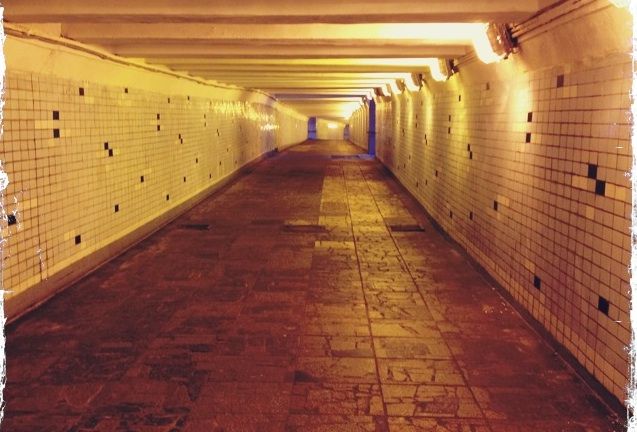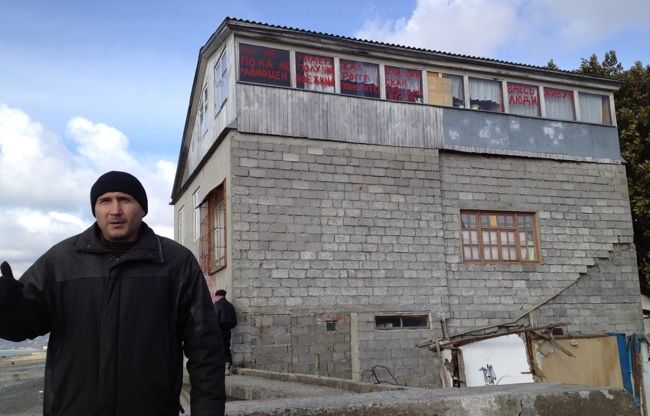What happens when we build big?
Julia Barton remembers going to the top floor of Dallas’s then-new city hall when she was teenager. The building, designed by I.M. Pei, is a huge trapezoid jutting out over a wide plaza. Julia found the view from the top pretty fantastic, especially when munching on a Caramello bar from the city hall vending machines.
But once she went to a protest in the plaza below. And those same windows, now hulking over her, made her feel small, and the whole event insignificant. Texans have a fondness for big structures—big arenas, big houses, big freeways. Julia wasn’t sure if their hidden message wasn’t simply this—”I’m important, you’re nobody.”
For people who distrust the big project, Edward Tenner’s 2001 essay “The Xanadu Effect” is some comfort. Tenner, a visiting scholar at Princeton University, ponders the ways in which obsession with bigness can presage hard times for a business or even a nation. Tenner named his essay not for Olivia Newton-John’s anthem or even the Coleridge poem, but for the palace Xanadu built in the movie “Citizen Kane.” That Xanadu, of course, was based on a real-life palace that newspaper mogul William Randolph Hearst built in his waning days of empire:
On its 24,000 acres were a 354,000-gallon swimming pool, a private zoo and four main buildings with a total of 165 rooms. Along with other such extravagances, the estate helped send Hearst into trusteeship late in life. The cavernous halls of Welles’ gloomy cinematic Xanadu seemed to filmgoers — as the real, happier building must have appeared to many Hearst Corp. public investors — the very image of the pride that goes before a fall.
The downside of the Xanadu Effect has seen itself play out in other places — the Empire State Building, for example, was conceived in the 1920s but completed during the Great Depression, when it was known as “the Empty State Building.” Tenner’s not arguing that big things shouldn’t be built; he’s saying bigness is a gamble. It pays off when it it uplifts people, gives them a sense of grandeur and purpose. It fails when it crushes them or just makes life a pain, as in the big-built city of Moscow, where pedestrians have to scurry under the wide avenues in tunnels:

On a recent reporting trip to Russia for PRI’s “The World,” Julia travelled to Sochi, Russia’s southern-most city and upcoming host of the 2014 Winter Olympics. Sochi is Europe’s biggest construction site right now, with Xanadu-like ice-palaces going up right on the Black Sea.

All the construction — including billions of dollars of infrastructure — is good news for the Russian state and shoring up its presence in the Caucasus. It’s not necessarily good news for the locals. Julia interviewed a Sochi resident, Alexei Kravets, who’s been in a stand-off with authorities about the fate of the home he built by the Black Sea.

Kravets’s court case to save his home has been standing in the way of a new railway complex. Construction workers have been throwing rocks through his windows, scraping his walls with backhoes, and hauling away his storage units. Kravets has taken to confronting them on film.
It’s a dramatic example of big vs. small, but this type of conflict often happens in the face of massive development. Edward Tenner says beyond just governments or private developers, we all need to think more carefully about the costs and benefits of building big.
“Bigness is a strategy that just about always fails, unless it succeeds. Or you could say it always succeeds except when it fails. And there really is no one way that you can regard it. You have to see it as a very powerful, easy-to-misuse, but also tempting way to go about things in life,” he says.
Notes:
- Julia Barton produced another great story from 99% Invisible about the Unsung Icons of Soviet Design. An all-time fav.
- More audio from the Russian protest Julia attended on her own podcast, DTFD.
- Julia’s story for PRI’s The World: Sochi 2014: Building Boom for Winter Olympics Leaves Some Behind



Comments (8)
Share
Hey everyone–just got back from Sochi before the Winter Olympics. Re-interviewed Alexei Kravets on the site of his old neighborhood. You can see what it’s become: http://www.pri.org/stories/2014-02-03/many-sochi-are-excited-show-their-city-olympics-not-all
Hey! What is the song at the end of this?
I’m sorry for asking, but is there a chance I can find out the music playing on the background?
Many thanks in advance!
song = balam acab?
I’m with you, daria. I too really want to know what the music is. Most of the rest of it does sound like Balam Acab, but I really want to know what the thing is they’re playing starting at about 6:22 in, that starts to fade out at about 7:30. I’ve listened to all of the BA I can get my hands on, but none of it sounds like that one. Same thing with the piece at the end, can’t figure out the exact song for that either. Does anyone have any more information?
http://cityhallblog.dallasnews.com/2015/03/dallas-is-considering-turning-over-barren-boring-city-hall-plaza-to-private-developer.html/?fb_action_ids=10205133902160798&fb_action_types=og.shares
Surprised you didn’t mention Xanadu Meadowlands in New Jersey, it’s this gigantic mall that was nearing completion right as the 2008 financial crisis hit.
Which Balam Acab is it at the end?